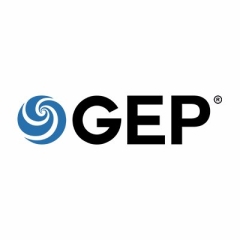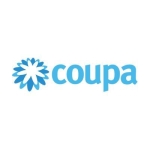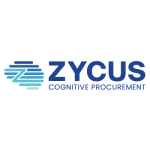What is our primary use case?
We use this tool in our supply chain department as our SRM tool. It interfaces to our business operating system, which is managed by SAP. The supplier module interfaces, through middleware called TIBCO, to our vendor master in SAP. The sourcing events primarily stay in GEP. The contracts module can be created and the workflow executed in GEP, and then it can create an SAP contract. Our purchase orders, requisitions, and work orders are all created in SAP and go to the cloud and the vendor through the portal in P2P.
We have the spend module, the supplier module, sourcing, contract, and P2P. It is 100 percent in the cloud.
How has it helped my organization?
There are aspects that are probably difficult to measure but I'd like to point to them first. One of them is simply compliance. We are a publicly regulated utility, and along with that comes special controls and compliance features. We've got the SOX controls that everyone else has. The ability to create contracts and set them up through the workflow, and have them available, both as a contract to select from, and as a catalog to pull a material or service item from in the GEP tool in the cloud, is really a benefit that is unique. Users simply cannot get that in our SAP system.
Our requisition-to-PO time has improved because we've got stock, numbered items set up on contracts and those can be picked from and attached to the requisition and issued automatically.
In addition, we have suppliers that go through the supplier module, which links with SAP, and the reporting on those suppliers for sourcing and for contracts is enhanced. And we are writing interface code between ISNetworld, our third-party safety provider, and GEP to better manage our service contractors.
The source-to-pay, or S2P, functionality has contributed to the digital transformation of our company. The source-to-pay would be sourcing contracts in P2P. We built interfaces between it and SAP to help our buyers do their work more efficiently. For instance, when a supplier receives a purchase order, they can confirm that purchase order through GEP. The interface then comes back into SAP and automatically fills out the SAP confirmation that the supplier received the purchase order. Any change requests are managed through the buyer. The buyer can edit the purchase order and re-issue the PO back to the supplier. A great deal of time is saved because, the old way, the buyer had to print off a fax and then manually go into the purchase order in change mode and add the confirmation manually. That would take five or ten minutes of the buyer's time, so if there were five or six that they were going to confirm, that could easily take a half hour. Now, all that is done automatically through the interface.
In terms of the efficiency of our procurement processes, back in 2015, our buyers were very tactical. Their scope of work was primarily managing requisitions and creating purchase orders. Now, our buyers are able to perform much more strategic work, and can begin to set up automatic purchase orders and work with contracts with the suppliers. That is something which, previously, had only been performed by commodity managers. So the efficiency of our team today is greatly enhanced through GEP.
The solution integrates with our ERP system. It's been built into the flow and the processes, so it's a pretty natural interface right now.
In terms of the solution saving us time when setting up an RFP, if we're going to do a three-bid buy, a simple RFP, it is done in SAP and issued out to the supplier through the portal. If we're going to do a sourcing event, that would be done in the tool. The commodity managers can create an event using the templates and have GEP as a complete repository of all of their events. They can bring in subject matter experts to evaluate the proposals. It's really a nice tool with great features that have improved the efficiencies and been of benefit to the commodity managers for sourcing. We do not have any metrics that really measure commodity manager efficiencies, but we do have general meetings between the director and the leadership and the commodity managers to evaluate their progress and understand what strategic things they're working on. Through that, the leadership can see whether we are where we think we should be in terms of managing the projects that we have.
What is most valuable?
I don't really tend to rank the features, but the portal from the supplier experience is dramatically updated and brought into this century from the old fax transmission and even Write Fax.
The spend module is really amazing and lightning-fast. It can give even the most novice of analysts access to the information needed and the ability to tweak it the way they want to see it. It has a lot of flexibility.
And the dashboards can collect all of that information and be repeatably produced almost instantaneously and can be set up in the background.
The supplier module really unlocks the sourcing and the contract modules.
We really like the contract module because it gives us an established workflow. For those people that love to have established processes, it's great. For people who want to be renegades and do what they want and "speed down the interstate" and make the rules up as they go; those people aren't going to tend to like an established process that they are confined to. But with the workflow that we developed, there's still a lot of flexibility, and the contract owner still has the ability to manage the contract through the workflow pretty effectively. I think we've got a nice, established process with an established workflow, but still have the flexibility so something doesn't get stuck for a week just because one person is not available.
In terms of ease of use, GEP has done a lot of work through its enhancements over the years to make the user experience more intuitive. There is a more standard-Amazon-like experience, where manuals and tutorials are not really required because the user experience and what's on the screen are pretty intuitive. Even basic users can utilize the tool because it's pretty easy and straightforward. They've incorporated those concepts throughout all their modules.
What needs improvement?
I do not know how they could get better in spend. That's a pretty great module.
We could probably take advantage of some of their available wizards and develop some intake efficiencies for the process so that it's not quite as much just data entry and creating certain profiles. We have not gone into the 2.0 version. The whole dynamic and interface between the modules may be improved or it may be the same thing that just looks a little bit different.
There are certain things within the contracts module — how to upload the line items, for example — that could be done to make that utility a little more user-friendly, a little more like the sourcing module. I'm interested to see how that might work.
For how long have I used the solution?
What do I think about the stability of the solution?
In today's market, the stability into the future can change with a phone call in the next hour. However, the growth that the business side of GEP has achieved over the course of the last five years, and their client-centric view of their business and business model, are things that give me confidence that they will be stable for the future, and for years to come.
What do I think about the scalability of the solution?
It has scalability from a tiny micro-business all the way up to a multinational, multicultural mega-company. I know with their clients that they are able to cover some of the largest companies in the world, as far as scalability goes. I don't know if they would market down to the tiny businesses, ones with less than ten people, but from what I've seen, they definitely could.
In our company there are roughly 500 to 600 users who have a login to the tool. The vast majority of them are subject matter experts who are going to review a contract. There are also contract approvers, and then there are people from legal, people from risk, and some people from accounting. Within supply chain there are users in the leadership, as well as administrators, buyers, and commodity managers. Maintenance is relatively small. We don't have very much IT impact anymore; that only happens on enhancements. So maintenance is one or two people and they're from IT.
We are looking to add more contracts and catalogs, and we are looking to potentially utilize the tool as a corporate-wide repository for all of our contracts.
How are customer service and technical support?
Technical support is pretty good. It got better once we got a steady-state customer service representative.
The customer service through the implementation was phenomenal. But once we went live, we weren't sure who we should call. We weren't going to call the main contact for the module anymore. We started to go through the general service desk and sometimes the answer didn't come back like we expected it to come back. We just didn't understand. And we didn't know who to go to. Back in 2017, they recognized the gap and developed within their organization a steady-state customer service department. That has really helped steady that aspect of their customer service.
The customer service rep is typically located in your time zone. That person has become a great resource for us. We have a weekly meeting set up just to talk about and look at the calls that have come in during the last week, and any open action items that we're working on.
In addition, every year GEP conducts a product advisory-council session. Their top clients all come in and meet. That is something that could be fairly controversial for some providers. But GEP welcomes that input and fosters that environment and relationship with its main clients because they want to hear what the thoughts are that are out there, and they want to get better. They want their product to be better because of that cooperative type of environment. They bring us all together in a big room and we talk about their stuff.
Which solution did I use previously and why did I switch?
We did not really have a previous solution. For spend, we used Excel and pulled tables from SAP. But we had nothing close to the tool that we've got now. The supplier module was managed inside SAP with an Excel profile template. For the sourcing module, we did have Iasta but we discontinued that relationship; GEP replaced it. We had a home-grown contracts repository and workflow, but that was pretty ineffective, much less effective than GEP.
How was the initial setup?
The initial setup was very complex. We did not have a large team on the implementation so it felt like it progressed slowly. Overall, the deployment took about a year-and-a-half.
Our implementation strategy initially started as a "big bang," but we quickly realized that that wasn't going to be doable, given the amount of work and training and the conversions of the processes needed. We had two project managers on the implementation who quit and moved on before I ever really became involved in the implementation. So the project was on its third project manager, and I went through the third, fourth, and fifth project managers before we got it implemented.
I have made a very flat declaration that I would not advise that type of process to anyone who tries to implement an across-the-board system like this. They need to have a dedicated team. Those resources need to be made available to the team for subject matter experts, and then training and culture change. Whether it's the ADKAR model or something else, experts in that, in their organization, need to be brought along with the implementation team.
What about the implementation team?
We did not have a third-party come in. We had our own IT and our own project manager, and the supply chain group working on the modules themselves.
Which other solutions did I evaluate?
We had a budget item that got nixed from our budget in 2010 and 2011 and then it finally passed in 2013. We started a sourcing event. I was not part of the sourcing event but we looked at some ten to 15 service providers and roughly half of those are no longer in business anymore. The sourcing event on our side had criteria that evaluated the marketplace which had to do with cost, quality, scalability, flexibility, ease of doing business, and growth with us. It came down to SAP Ariba and GEP and we decided on GEP.
What other advice do I have?
It's very important to have people who understand the depth of the technical aspects of their processes and how their systems work. Also, there needs to be a keen understanding and awareness of what the regulatory requirements are of their processes, what their key controls are. If those members are not on that team, there can be some real problems within a year if there are regulatory requirements that are not addressed in the day-to-day operation of those systems.
As for the adoption of the platform in our company, initially, we were pretty hesitant and resistant to change. But when people started to use it they really started to like the tool. It has taken a while, and the contracts module is probably the very last one to really get adopted. We've been pretty attached to it for the last two years and it is generating momentum to become the corporate-wide contracts repository for all of our corporate contracts, not just those created to work in supply chain. So that is a tremendous win, culturally, for adoption with the tool.
The experience is probably different for every single user, but I like how fast the tool is. The response time is great. It is so fast through the cloud. They've really been able to maximize that. The spend module is just fascinating with how fast it is.
Inside the procurement functionality of supply chain, we put our purchase orders to our suppliers through the portal, through GEP. We can write contracts and approve and execute those contracts through the GEP system. But SAP is where we would create the purchase order and release it in SAP. So we do not create purchase orders or do goods receipts or service entries in GEP. We do that in SAP.
The fact that the GEP solution is a single, unified software platform for our company has had a positive effect, but it is not our single solution because we interface with SAP. An example of how it has affected our company is that our spend analytics are all in one place. My director sent me a message at something like 6:30 in the evening, when he was at a dinner, and asked me our spend with a certain supplier. I was able to get onto GEP and send him a snapshot of the spend in a matter of moments. The difference between GEP and our previous models is that, back then, he might have asked three different people and gotten three different answers. With GEP, it's going to be the single answer that is correct, because it's consistently pulling from the tables.
The solution's AI and machine-learning features have not affected our procurement processes at this point. We're looking at that from an accounts-payable standpoint, managing and processing invoices, but not on the procurement side.
Disclosure: PeerSpot contacted the reviewer to collect the review and to validate authenticity. The reviewer was referred by the vendor, but the review is not subject to editing or approval by the vendor.





